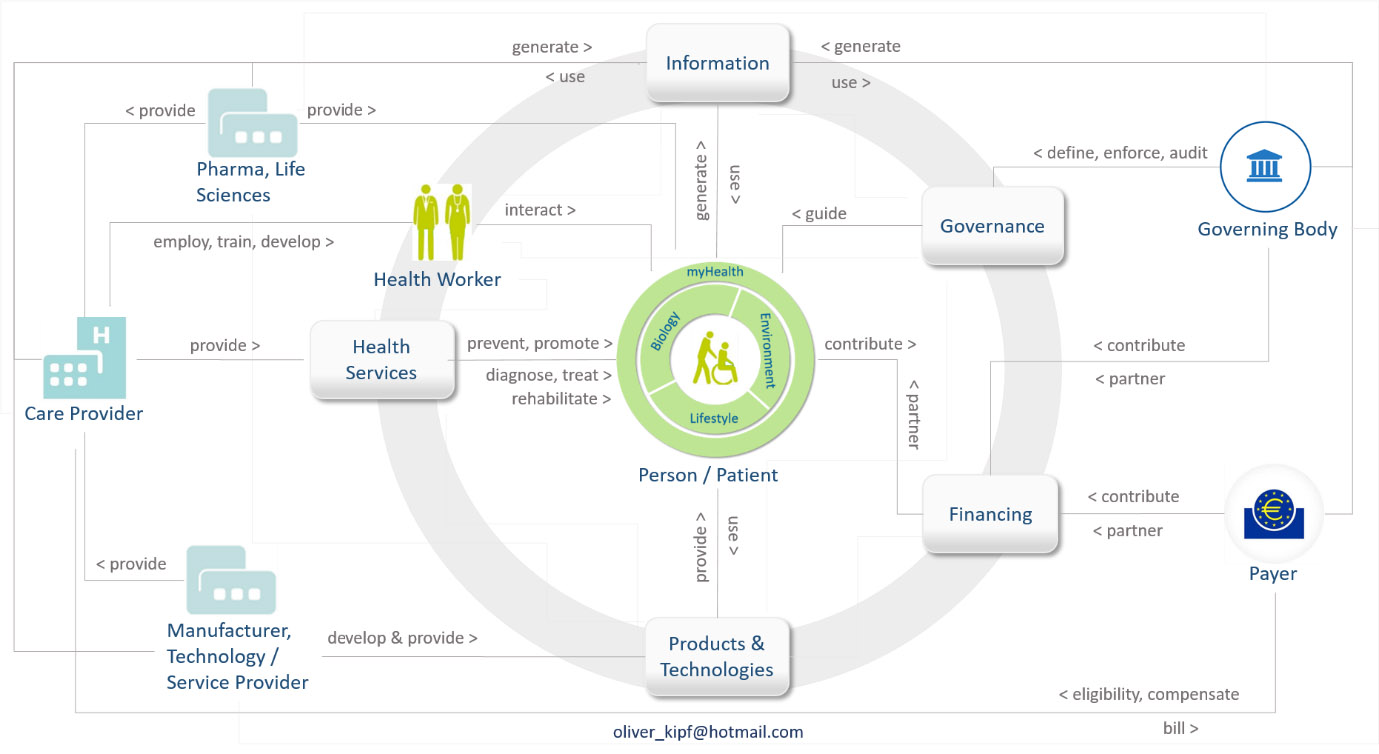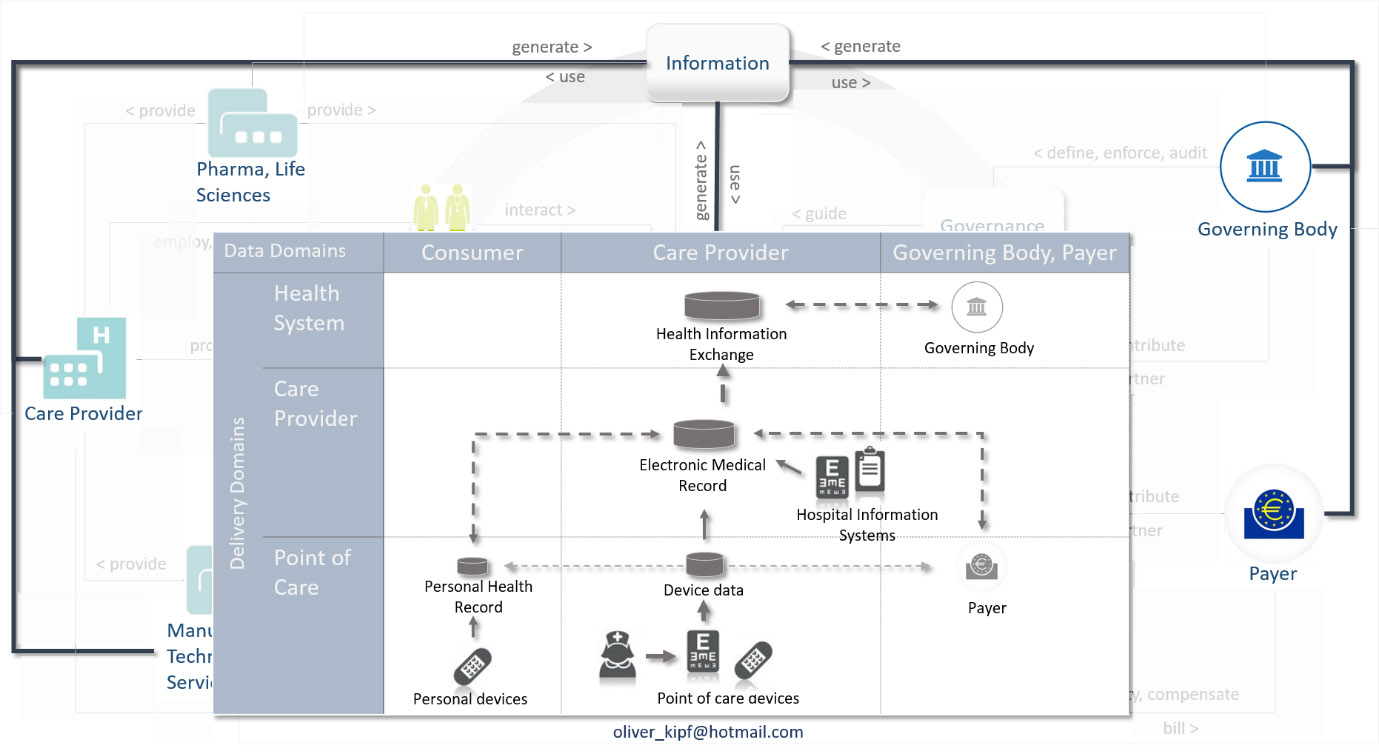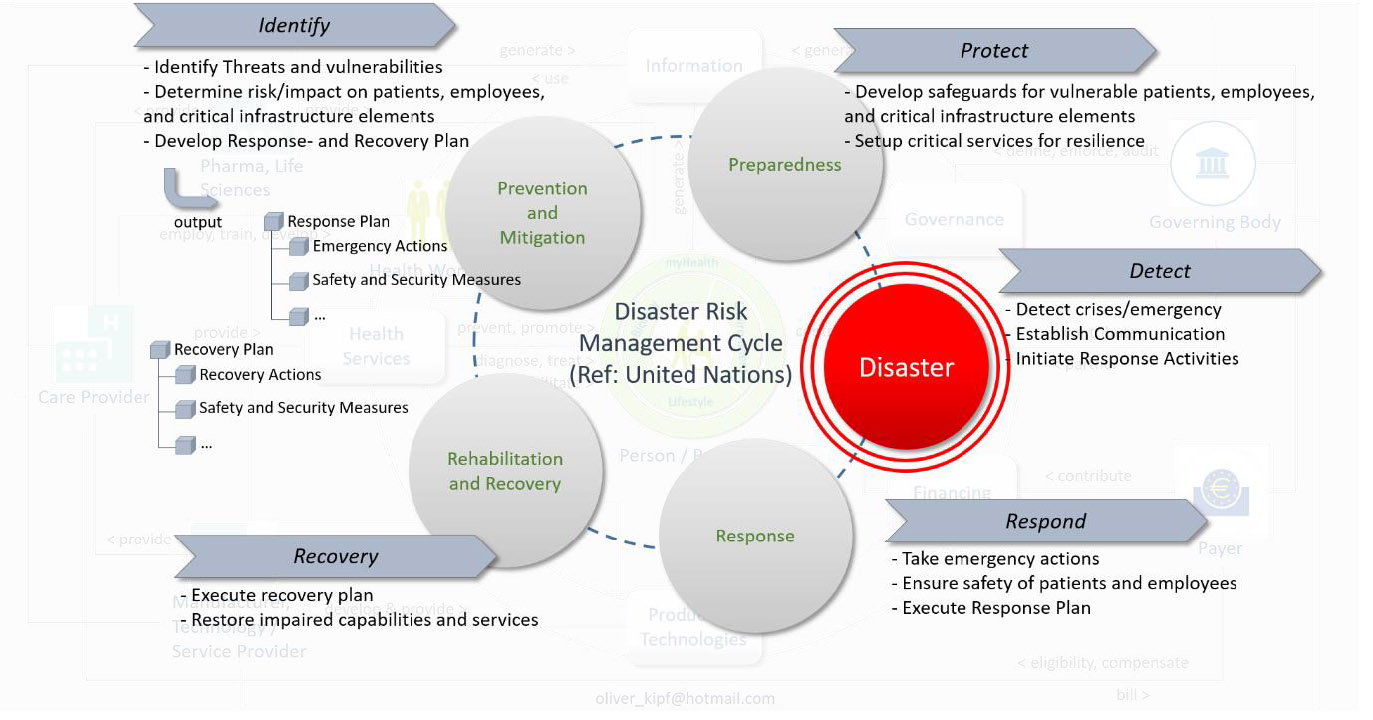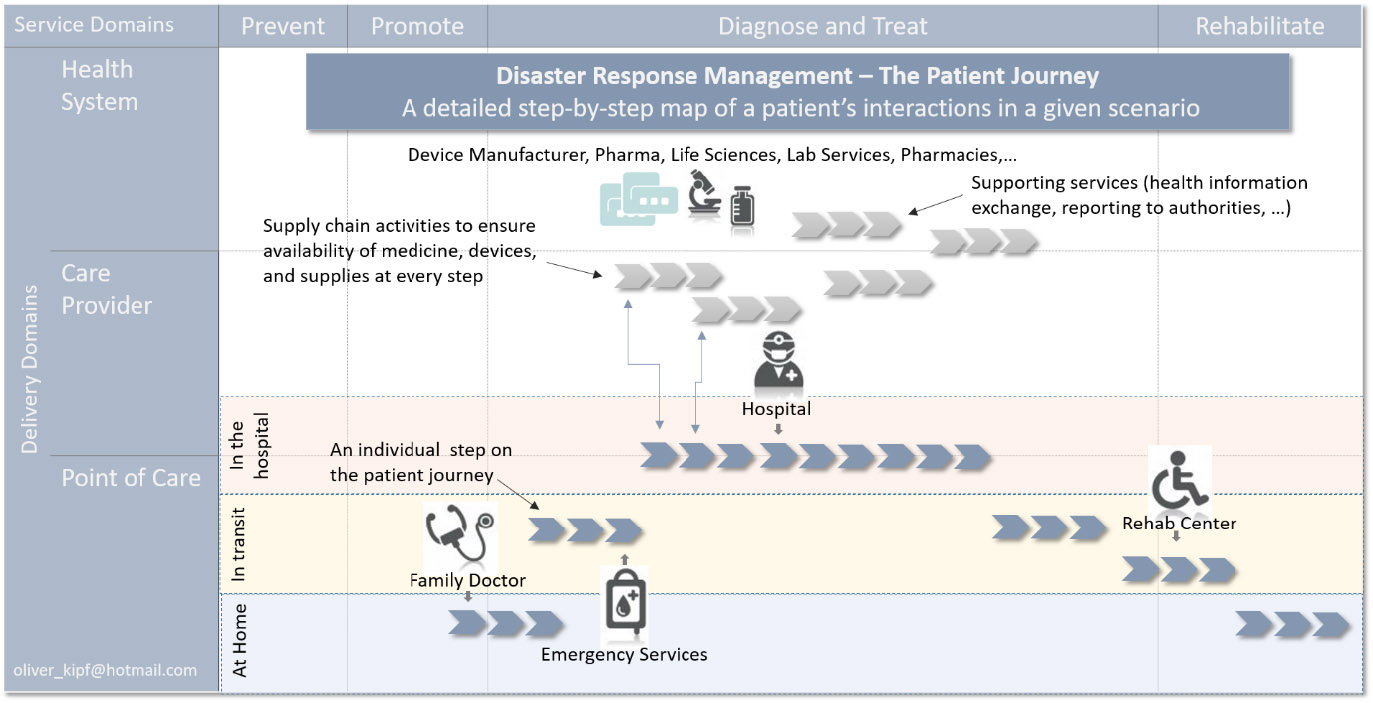.
Kipf professionally combines his expertise in healthcare and Enterprise Architecture Management (EAM) and relies entirely on Enterprise Architect. He is currently working intensively on a reference architecture for healthcare that puts the patient in the center and also includes a pandemic scenario.

Picture Copyright: Oliver Kipf
Oliver Kipf professionally combines his expertise in healthcare and Enterprise Architecture Management (EAM) and relies entirely on Enterprise Architect. He is currently working intensively on a reference architecture for healthcare that puts the patient in the center and also includes a pandemic scenario.
„Such a worldwide event puts the entire health care system to a hard test. As part of the standardization committee „The Open Group“, we have been working intensively for some time now on a reference architecture that focuses on the well-being of patients and will also include a pandemic scenario.
As can be seen particularly drastically at present, the health care system worldwide is facing a multitude of different challenges. For example, it is becoming clear that despite advanced health technologies for certain diseases and treatments, the overall experience from the patient‘s perspective has often not really improved. We hope that this will help us to better cope with such challenges in the future.
„A reference architecture should promote the delivery of care across the entire health continuum of a patient. It should include an architecture development methodology and provide a blueprint for the architecture of an individual company and its partner network. A key principle is to design
healthcare services and related processes around the patient, not the disease“.
Enterprise Architect in healthcare
Enterprise Architect has been used successfully in the health care sector on several occasions. For example, Sparx Systems, together with Health Level Seven International (HL7®), an organization for interoperability and standards in health information technology with members in 55 countries, announced a competition to create a UML profile as early as 2012. Such UML profiles should enable commercial tools to work with HL7 models that have functions that extend standard UML expressions. Sparx Systems thus set an example for the development of health standards and supported the development of training courses in health informatics.
In 2014, a case study was published on the use of Enterprise Architect to build a state-run health insurance exchange in an American state. It showed how the modeling platform accelerates larger projects by leveraging reusable knowledge stored in an open standards-based framework. The analysis covered the application of EAM and the optimization of team-based modeling, collaboration and planning
Reference architecture for the healthcare sector
Oliver Kipf‘s work on creating a reference architecture thus joins several initiatives by Sparx Systems to modernize the healthcare sector through the targeted use of models and to support it in its growing tasks. The reference architecture under development will consist of one or more specifications and a reference implementation. A first model implementation (use case), based on Enterprise Architect, met with great interest during previous presentations.
„For such a regulated sector as healthcare, Enterprise Architect‘s outstanding capabilities in terms of traceability and management of interdependencies are central to the model. This is why this modeling platform is currently becoming more and more widespread in the healthcare sector,“says Kipf, describing his practical experience. In the Netherlands, for example, a reference architecture for hospitals in Enterprise Architect has been in development for some time.
Peter Lieber, founder and owner of SparxSystems Central Europe:
“We are very proud to be able to support the healthcare sector with Enterprise Architect, especially in such a difficult phase as the Corona pandemic. As we can currently see, the importance of healthcare
in modern societies is often underestimated. The IT architecture must also do justice to this central role
by relying on state-of-the-art methods and drawing an overall picture of the healthcare system via
models“.
SIX PRINCIPLES OF A ARCHITECTURE FOR THE HEALTHCARE SYSTEM
For Oliver Kipf, the main beneficiaries of a future reference architecture are patients, health professionals and healthcare organizations. It will be used above all by planners, managers and corporate architects. The basic principles of a health architecture, which are closely interwoven and build on each other, are briefly explained in the following section
A central principle of the new reference architecture is the design of health services and related processes around the patient, not the disease
Copyright Oliver Kipf
The flow of information in the health sector
Copyright Oliver Kipf
The reference architecture also contains clear guidelines for risk management,
e.g. in the event of a pandemic
Copyright Oliver Kipf
A disaster, such as a pandemic, requires a preliminary analysis of treatment scenarios through detailed patient travel cards
Copyright Oliver Kipf
SIX PRINCIPLES OF A ARCHITECTURE
FOR THE HEALTHCARE SYSTEM

Principle 1: Focus on the person
Designing health services and related processes around the patient, not the disease

Principle 2: Team Delivery
Coordinate the provision of care services in your partner network.

Principle 3: Service Orientation
Design the company and your partner network along the healthcare and support services you provide.

Principle 4: Quality at every step
Make quality and regulatory compliance an integral part of your work. Define the quality structure of your partner network and set processes in motion to achieve the desired results.

Principle 5: from Strategy to Execution
Plan where you want to be and how to get there. The necessary skills must be built up, provided and developed.

Principle 6: Development over the life cycle
The environment is changing, new requirements are emerging. Services or processes require adjustments, plants only last a limited time and need to be maintained. Therefore, continuous improvement is needed to become better all the time.
DISASTER RISK MANAGEMENT
A disaster, such as a pandemic, requires a preliminary analysis of treatment scenarios through detailed patient travel cards. At each step of a patient journey, the entry conditions (sterilization, decontamination, etc.), the required activities (clinical, non-clinical), the staff, the supply chain (drugs,
equipment and consumables), the infrastructure elements and the exit criteria are defined. Once they are defined, controls must be put in place to ensure the continuity of the supply chain and the availability and capacity of mission-critical infrastructure elements.
Text: Rüdiger Maier




